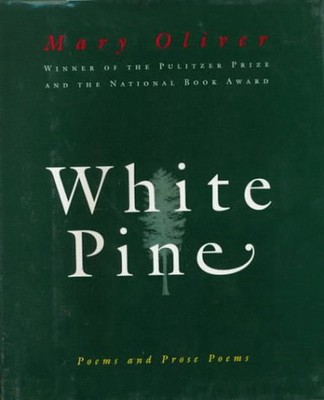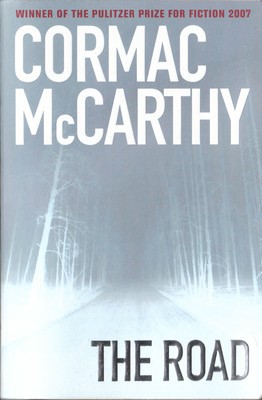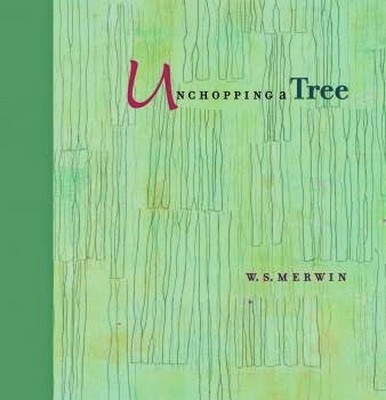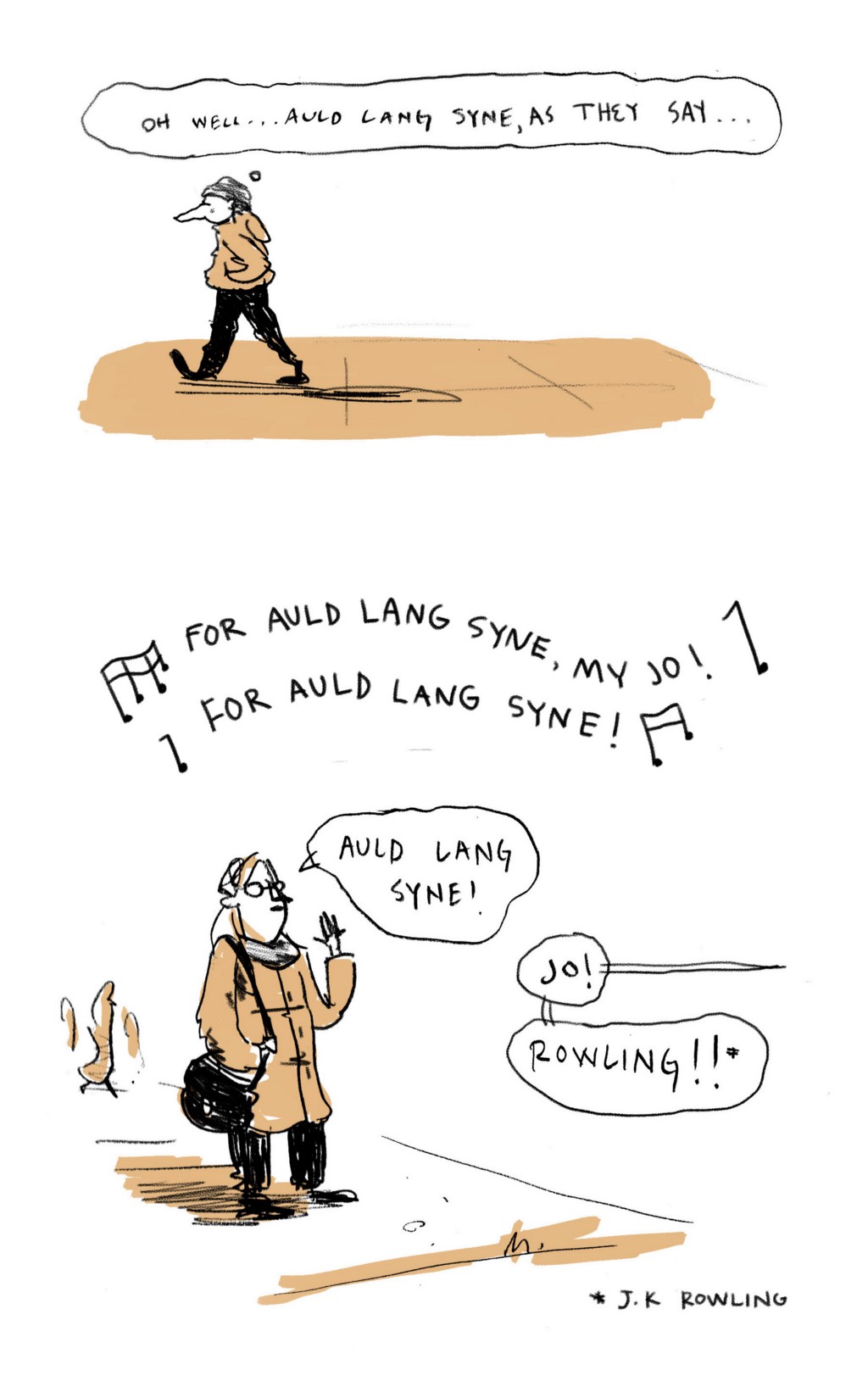Reading Lists
11 Books and their 11 Spectacular Trees
From Italo Calvino’s Oaks to Arundhati Roy’s Mangosteens, trees have been the stuff of inspiration for as long as we’ve told stories

Electric Lit is just $4,000 away from our year-end fundraising goal of $35,000! We need to hit this target to get us through the rest of 2025, and balance the budget for 2026. Please give today! DONATE NOW.
The year after I graduated college, I was broke. Hungry broke. So broke that I didn’t need to set an alarm clock, because my growling stomach would wake me up every morning at seven. I was living in the last house at the dead-end of a dirt road at the top of a mountain in southern Vermont, surrounded by forest, and every morning I’d get up, pour myself a small bowl of Cheerios, and read. And look at the trees. And then read some more.
That fall, I put cereal on the table by working as a woodcutter. For ten dollars an hour, I’d swing a maul, over and again, splitting piles of firewood for the winter — oak, hickory, birch, ash, locust, beech — and then I’d go home to my books. I read most of Shakespeare’s plays that year, and Goethe’s Faust, and Nietzsche’s collected works. I dove into Hemingway and Hunter S. Thompson, and I read and reread Invisible Man. It was the year I discovered Rebecca Solnit and reacquainted myself with Willa Cather. When I got paid, I’d go to the used bookstore, pick up a few titles, and then return home to read and contemplate the trees.
Perhaps it’s no surprise that my own book, This Radical Land: A Natural History of American Dissent (forthcoming in 2018), is about trees and what happened when certain nineteenth-century Americans, skeptical about the social and environmental costs of capitalist progress, looked out at them. I spent ten years reading everything about trees and culture that I could; yet what I read is only a fraction of what’s out there — even in English. It seems that humans have never tired of writing about the sylvan world.
Here are a few of those books, and a handful of the trees I discovered, a highly idiosyncratic list, that have helped to define my life. Maybe some of them will guide you through your inner forest.


Tree: Wolf Willow
Book: Wolf Willow: A History, a Story, and a Memory of the Last Plains Frontier, by Wallace Stegner
Stegner moved frequently as a child, but he spent his boyhood in southern Sasketchewan on what was the last North American frontier. His book begins when the middle-aged Stegner returns, for the first time, to his hometown, only to find it utterly strange, until he crushes a few leaves of the scrubby, silver-leafed wolf willow, and brings it to his nose. What ensues is a Proustian remembrance that blends fiction, lightly fictionalized memoir, history, and philosophy of history — “a librarian’s nightmare,” Stegner called it — every page of which is bewitching.

Trees: Palm, Cottonwood, Rubber, Holly
Book: Gardens in the Dunes, by Leslie Marmon Silko
Gardens in the Dunes is set at the end of the nineteenth century, and begins in a small pocket of bone-dry desert on the Arizona-California desert where Indigo, her mother, grandmother, and sister are the last of the Sand Lizard people. It’s the very end of the US’s unbroken war against the American Indians, and the novel follows Indigo as she’s captured, sent to an Indian boarding school to be “civilized,” and then taken in by a woman named Hattie and her botanist husband, Edward, who combs the globe for marketable plants. The trio travel widely — Europe, South America, the East Coast of the US — as Indigo struggles to find a place in a world that is being so quickly remade in the image of empire and capitalism. Silko is painterly in her evocation of nature, and each new journey of Indigo’s is marked by strange new trees. In a scene that functions synedochally for the rest of the novel, Indigo, transplanted to New York City stands, shocked, as two entire entire beeches are uprooted and replanted: “wrapped in canvas and big chains on the flat wagon was a great tree lying helpless, its leaves shocked limp, followed by its companion; the stain of damp earth like dark blood seeped through the canvas.”
Support Electric Lit: Become a Member!

Tree: White Pine
Book: White Pine: Poems and Prose Poems, by Mary Oliver
Evergreens have long carried with them connotations of healing, of resurrection, of life everlasting — arbor vitae literally means “tree of life” — which is one of the reasons why they are used for Christmas trees. Oliver’s collection meditates on life and the passage of time measured against the environment, and it glows with spiritual revelation: “This is, I think,/ what holiness is:/ the natural world,/ where every moment is full/ of the passion to keep moving.”

Tree: The Tree of Death
Book: The Road, by Cormac McCarthy
The unrelenting dull despair of McCarthy’s post-apocalyptic The Road comes from his evocation of a hopeless world devoid of all but human life, which he establishes by having his father-and-son protagonists march through an unchanging landscape of dead and burnt trees. Page after page, step after step, there’s nothing but burnt forests for his characters to look upon, nothing but shades of ashen grey, nothing with which to kindle hope. And yet the father walks on, in faith. “All the trees in the world are going to fall sooner or later,” he tells his son. “But not on us.”
The Girls Who Turned into Trees

Tree: Tree of Life
Book: Unchopping a Tree, W.S. Merwin
Merwin’s poem, Unchopping a Tree, elegantly bound in a hardcover edition from Trinity University Press, brilliantly captures the poet’s twin commitments to environmentalism and pacifism, both of which, at root, are about a practice of care. There’s a deep sadness to Unchopping a Tree, which imagines what it would take to put just one felled trunk back together so that it could again live. Along the way, the reader gains a sense of just how carefully, fragilely, and perfectly life teeters on the edge of oblivion. “Everything is going to have to be put back,” Merwin ends on a note that blends resolve with desperation.

Tree: Mangosteen
Book: The God of Small Things, by Arundhati Roy
Roy’s first novel is a tragedy set against the enduring ravages wrought by British colonialism in India that left marks on bodies, on lives, on politics, and on the land. The story follows a pair of young, innocent twins, Estha and Rahel, who one day discover an old boat lying beneath a mangosteen tree that their great-grandfather, a minor religious celebrity known as the Revered E. John Ipe, had planted on the banks of the enormous Meenachal River. Estha and Rahel, and, later, their British cousin Sophie Mol, take to playing in the boat — the same boat used by their mother to cross the river at night and meet with her Paravan, Marxist lover, a violation of of both strict caste conventions and class. The same boat from which Sophie Mol will tumble and drown. The mangosteen witnesses this all, and is the mark of history: a tree planted by a well-to-do great-grandfather in colonial times, a tree sheltering the secret of illicit love, a tree under which the innocence of childhood drowns in the trauma of becoming adult.

Tree: White Birch
Book: Survival of the Bark Canoe, by John McPhee
McPhee has written about trees — or their fruits or the people who live amongst them — on a number of occasions, but my favorite, and possibly my favorite McPhee of all time, is his slim volume, The Survival of the Bark Canoe, from 1975. It’s about a young, intense man named Henri Vaillancourt, one of two Euroamericans alive at the time who knew how to make a canoe in the traditional, Native American way, using nothing but the bark of a white birch, cedar planking, spruce roots and pitch, an axe, an awl, and a knife. McPhee and Vaillancourt take one of the canoe builder’s boats down the Allagash river in Maine, and the book-length essay is a tale of clashing personalities, monomaniacal obsession (Vaillancourt does nothing but think about, talk about, and make canoes, writes McPhee), and McPhee’s quest to understand what drives someone to build a boat that had all but gone extinct. It is also a tale of artistry — only McPhee could turn the details of shaping a gunnel, thwart, or rib into poetry — that ultimately begs the unresolved question, how should we take care of the past?

Tree: Holm Oak
Book: The Baron in the Trees, by Italo Calvino
When Italo Calvin sets his magical-realist novel in a Holm Oak tree surrounded by an eighteenth-century Italian forest, he’s following in a long tradition. The woods have seemingly always been a site for fantasy, hallucination, and wonder. Try to imagine A Midsummer Night’s Dream taking place in a wheat field, Snow White in a market place, The Legend of Sleepy Hollow in Manhattan. The Baron in the Trees is the tale of a young nobleman, Cosimo, who took to living in his family’s oak tree at the age of twelve, never to set foot on land again. Aloft in his sylvan kingdom, Cosimo discovers true liberation, and, over the course of the next fifty years, fights battles, makes journeys, falls in love, and gradually turns into a Saint Francis-esque woodland sprite. He never dies, either, and instead simply floats away on a rope dangling from a passing hot-air balloon. It’s a fable, but one that resonates with Emerson’s observation that “in the woods, we return to reason and faith.”

Tree: Tree of Knowledge
Book: Forests: The Shadow of Civilization, by Robert Pogue Harrison
Harrison’s Forests is a genealogy of how forests have cultivated the Western cultural imagination, from antiquity to the late-twentieth century (the book was published in 1992), but it’s not the standard one-damn-thing-after another kind of history; instead, it’s a beautifully rendered philosophical essay that moves subtly, unpredictably, and thrillingly to its final conclusion. Facing the forests, Harrison writes, we find ourselves, not because the trees are like us — they’re irreducibly different, in fact — but because, in their unknowable difference, they set us free to become who we are. When we lose touch of the forests, we lose everything.
12 Unforgettable Forests in Literature

Trees: Hemlock and Oak
Book: “I robbed the Woods,” (or poem 41 from The Complete Poems of Emily Dickinson), by Emily Dickinson
Emily Dickinson is a paradox: haunted by loss, she gave to the world poetry that is radiant with an evergreen beauty. Dickinson, whom the cultural critic Lewis Mumford called “a rare flower,” drew her inspiration from both death and the vitality of the natural world, which, in many of her poems, are yoked together. One of my favorites, poem 41 from 1858, echoes loudly in our era of global climate change and environmental degradation:
I robbed the Woods —
The trusting Woods.
The unsuspecting Trees
Brought out their Burs and mosses
My fantasy to please.
I scanned their trinkets curious —
I grasped — I bore away —
What will the solemn Hemlock —
What will the Oak tree say?

And simply: Leaves
Book: About Trees, by Katie Holten
I just recently found Katie Holten’s About Trees, and I’ve never encountered anything quite like it. Holten, an Irish artist living in New York, invented a tree font: A is represented by the skeletal silhouette of an apple tree, B by the beech, all the way on to the Zelkova. The form of each sylvan letter is unique. About Trees is composed from excerpts of famous passages on trees, Darwin on thinking, for instance, rendered in English — and then reprinted, all on one page, in Holten’s tree font. Holten turns text into a forest, and the tremendous beauty of her art comes in the realization that the tree-font forest is both immediately familiar — as in the opening lines from Radiohead’s “Fake Plastic Trees”: “Her green plastic watering can for/ her fake Chinese rubber plant/ In the fake plastic earth” — and immensely strange. Her book is a wilderness of prose and poetry that ultimately returns us to the fact of human wondering, which we have long recorded on leaves.










